Apps
Auto Added by WPeMatico
Auto Added by WPeMatico
After focusing on Asian markets, particularly in Southeast Asia, Bangkok-based Eko Communications is getting ready to take on Slack, Microsoft Teams, and other enterprise messaging apps in Europe. The startup announced today that it has raised a Series B of $20 million and opened offices in London (which will serve as its new commercial headquarters), Amsterdam, and Berlin.
The funding, led by SMD Ventures, with participation from AirAsia’s digital investment arm Redbeat Ventures, Gobi Partners, East Ventures, and returning investors, brings Eko Communication’s total raised to $28.7 million. The company’s Series A was announced in 2015, followed by $2 million in strategic funding from Japanese conglomerate Itochu last year. Eko Communications (not to be confused with Eko, an interactive video startup) has already served clients like Thai mobile operator True, Radisson, and 7-Eleven.
Eko Communications’ Series B is earmarked for its ambitious global expansion plans in the first quarter of 2019. Korawad Chearavanont, the company’s CEO and co-founder, told TechCrunch in an email that it has already localized products for target markets including the UK, Ireland, Benelux, and the DACH region (Germany, Austria, and Switzerland).
Eko Communications wants to expand in the European Union and the United States because their economies are both significantly larger than Southeast Asia’s, said Chearavanont. This, plus the fact that both have larger enterprise IT markets thanks to higher spending on software by companies, means that “for Eko to achieve the necessary scale to become a global player in the mobile enterprise market, continued growth in these markets is critical,” he added.
The company claims that its revenues have more than tripled in the past year and that it now has more than 500,000 recurring paid users. Of course, any enterprise messaging startup has to contend with the specter of Slack and Microsoft Teams. Positioning Eko Communications as a rival to those services, however, isn’t totally accurate because they are aimed at different customers.
Slack and Microsoft Teams are “primarily utilized by ‘knowledge workers’ and these systems are priced for these types of users,” Chearavanont said. “Being a mobile-first company, we target companies that have a large presence of mobile-first staff traditionally in industries like retail and hospitality (the services sector in general).” Many employees in those sectors still rely on messaging apps like WhatsApp or email to communicate, so Eko Communications seeks to make it easy for companies to transition from their ad hoc communication methods to a more secure and efficient system with tools like APIs to help them integrate legacy systems.
Powered by WPeMatico
More U.S. consumers were shopping on mobile devices on Black Friday this year, with $2.1 billion in sales coming from smartphones. This trend was also reflected across the U.S. App Store. According to new data from Sensor Tower out this morning, the top 10 shopping apps on the App Store added half a million first-time users on Black Friday. That’s up 16.3 percent from the same day in 2017, the firm found.
Overall, new shopping app installs grew 9 percent over last year, to reach approximately 1.8 million. To be clear, this number is new downloads, not re-downloads from someone who previously had the app installed on their device, but deleted it at some point. (Of course, those consumers may have already been customers on the web.)
Not surprisingly, Amazon’s app was the most installed, as it has been in years past. But Walmart’s app gained steam as it saw more significant year-over-year growth, the report said.
This year, Amazon added around 115,000 new app users, up 11.7 percent from 2017. Walmart, however, added 95,000 first-time users, up 39.7 percent over last year. Target’s app, which was the third most installed this year, grew 3.3 percent, from 2017 with around 62,000 new users.
The rest of the top 10 was rounded out by Wish, Best Buy, eBay, Offer Up, Fashion Nova, Macy’s and JCPenney. This includes both brick-and-mortar and online retailers.
In terms of online-only retailers, the list looked a little different. Amazon was still in the lead, but was then followed by Wish, eBay, Offer Up, Fashion Nova, GOAT, Poshmark, Letgo, Zaful and Shein.
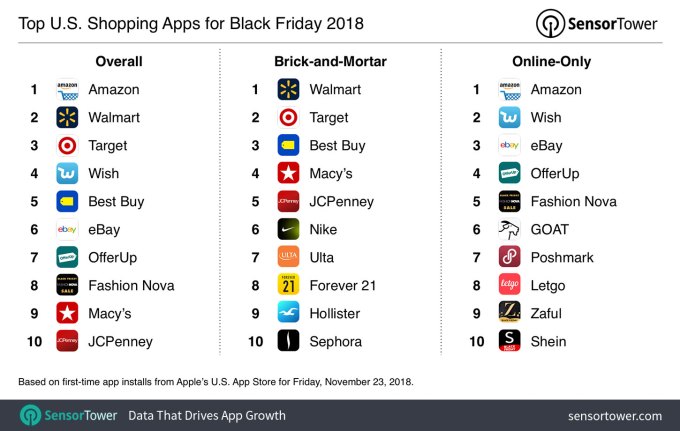
Walmart, meanwhile, was the most-downloaded app out of all the brick-and-mortar retailers, followed by Target, Best Buy, Macy’s, JCPenney, Nike, Ulta, Forever 21, Hollister and Sephora.
Overall, new downloads from the brick-and-mortar apps were up 24.7 percent over last year’s Black Friday, while the online-only apps grew around 20 percent.
Of these, Best Buy also had a good year in terms of new installs, the firm said. Around 34.5 percent new users installed its app for the first time, with about 39,000 new downloads in 2018 compared to 29,000 in 2017.
Sensor Tower wasn’t the only App Store intelligence firm predicting a boost in mobile shopping for this year’s Black Friday. App Annie also forecast the sales holiday in 2018 would break new records.
In the two-week period including Thanksgiving, Black Friday and Cyber Monday, App Annie was predicting a 25 percent increase in time spent in shopping apps on Android devices — nearly double from the four years prior.
However, the Google Play numbers aren’t in yet to confirm this. They should be available later in the week.
Powered by WPeMatico
A true apology consists of a sincere acknowledgement of wrong-doing, a show of empathic remorse for why you wronged and the harm it caused, and a promise of restitution by improving ones actions to make things right. Without the follow-through, saying sorry isn’t an apology, it’s a hollow ploy for forgiveness.
That’s the kind of “sorry” we’re getting from tech giants — an attempt to quell bad PR and placate the afflicted, often without the systemic change necessary to prevent repeated problems. Sometimes it’s delivered in a blog post. Sometimes it’s in an executive apology tour of media interviews. But rarely is it in the form of change to the underlying structures of a business that caused the issue.
Unfortunately, tech company business models often conflict with the way we wish they would act. We want more privacy but they thrive on targeting and personalization data. We want control of our attention but they subsist on stealing as much of it as possible with distraction while showing us ads. We want safe, ethically built devices that don’t spy on us but they make their margins by manufacturing them wherever’s cheap with questionable standards of labor and oversight. We want groundbreaking technologies to be responsibly applied, but juicy government contracts and the allure of China’s enormous population compromise their morals. And we want to stick to what we need and what’s best for us, but they monetize our craving for the latest status symbol or content through planned obsolescence and locking us into their platforms.
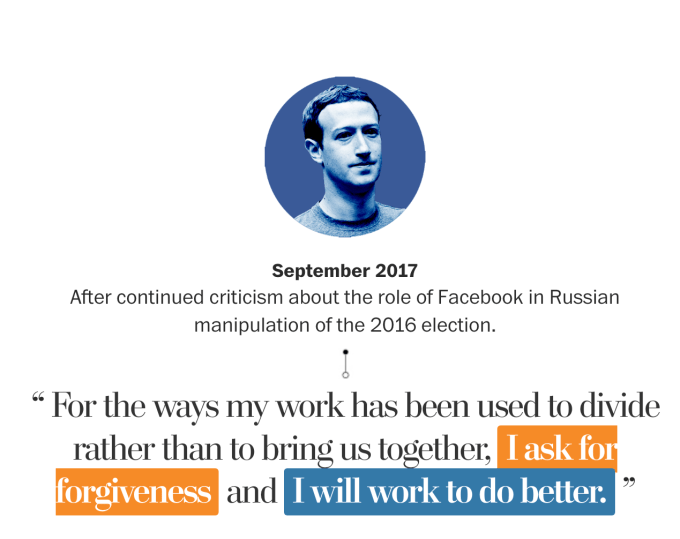
The result is that even if their leaders earnestly wanted to impart meaningful change to provide restitution for their wrongs, their hands are tied by entrenched business models and the short-term focus of the quarterly earnings cycle. They apologize and go right back to problematic behavior. The Washington Post recently chronicled a dozen times Facebook CEO Mark Zuckerberg has apologized, yet the social network keeps experiencing fiasco after fiasco. Tech giants won’t improve enough on their own.
The threat of us abandoning ship should theoretically hold the captains in line. But tech giants have evolved into fundamental utilities that many have a hard time imagining living without. How would you connect with friends? Find what you needed? Get work done? Spend your time? What hardware or software would you cuddle up with in the moments you feel lonely? We live our lives through tech, have become addicted to its utility, and fear the withdrawal.
If there were principled alternatives to switch to, perhaps we could hold the giants accountable. But the scalability, network effects, and aggregation of supply by distributors has led to near monopolies in these core utilities. The second-place solution is often distant. What’s the next best social network that serves as an identity and login platform that isn’t owned by Facebook? The next best premium mobile and PC maker behind Apple? The next best mobile operating system for the developing world beyond Google’s Android? The next best ecommerce hub that’s not Amazon? The next best search engine? Photo feed? Web hosting service? Global chat app? Spreadsheet?
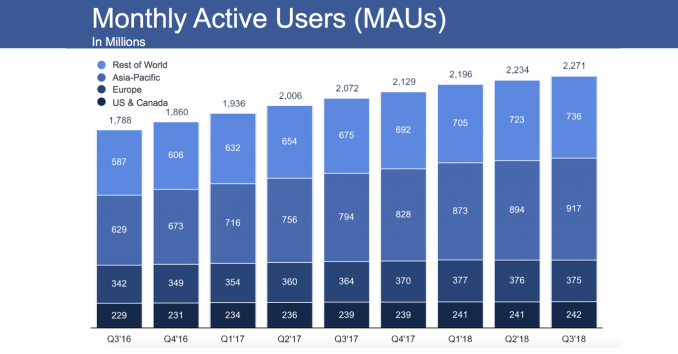
Facebook is still growing in the US & Canada despite the backlash, proving that tech users aren’t voting with their feet. And if not for a calculation methodology change, it would have added 1 million users in Europe this quarter too.
One of the few tech backlashes that led to real flight was #DeleteUber. Workplace discrimination, shady business protocols, exploitative pricing and more combined to spur the movement to ditch the ridehailing app. But what was different here is that US Uber users did have a principled alternative to switch to without much hassle: Lyft. The result was that “Lyft benefitted tremendously from Uber’s troubles in 2018” eMarketer’s forecasting director Shelleen Shum told the USA Today in May. Uber missed eMarketer’s projections while Lyft exceeded them, narrowing the gap between the car services. And meanwhile, Uber’s CEO stepped down as it tried to overhaul its internal policies.
This is why we need regulation that promotes competition by preventing massive mergers and giving users the right to interoperable data portability so they can easily switch away from companies that treat them poorly
But in the absence of viable alternatives to the giants, leaving these mainstays is inconvenient. After all, they’re the ones that made us practically allergic to friction. Even after massive scandals, data breaches, toxic cultures, and unfair practices, we largely stick with them to avoid the uncertainty of life without them. Even Facebook added 1 million monthly users in the US and Canada last quarter despite seemingly every possible source of unrest. Tech users are not voting with their feet. We’ve proven we can harbor ill will towards the giants while begrudgingly buying and using their products. Our leverage to improve their behavior is vastly weakened by our loyalty.
Regulators have failed to adequately step up either. This year’s congressional hearings about Facebook and social media often devolved into inane and uninformed questioning like how does Facebook earn money if its doesn’t charge? “Senator, we run ads” Facebook CEO Mark Zuckerberg said with a smirk. Other times, politicians were so intent on scoring partisan points by grandstanding or advancing conspiracy theories about bias that they were unable to make any real progress. A recent survey commissioned by Axios found that “In the past year, there has been a 15-point spike in the number of people who fear the federal government won’t do enough to regulate big tech companies — with 55% now sharing this concern.”
When regulators do step in, their attempts can backfire. GDPR was supposed to help tamp down on the dominance of Google and Facebook by limiting how they could collect user data and making them more transparent. But the high cost of compliance simply hindered smaller players or drove them out of the market while the giants had ample cash to spend on jumping through government hoops. Google actually gained ad tech market share and Facebook saw the littlest loss while smaller ad tech firms lost 20 or 30 percent of their business.
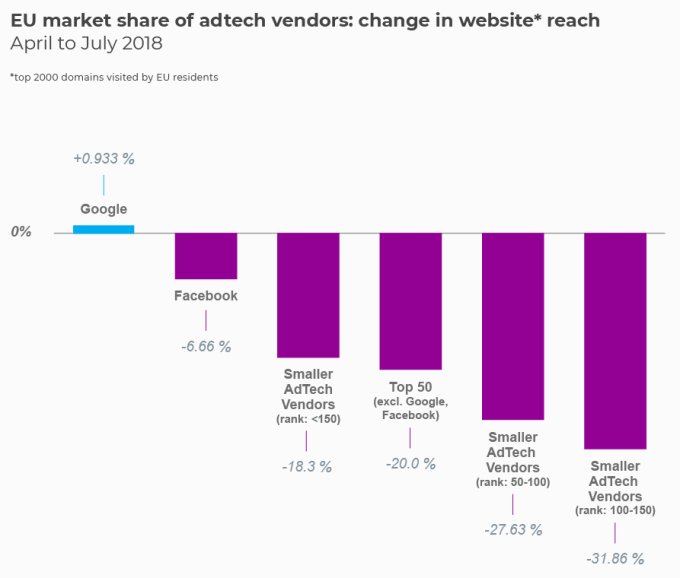
Europe’s GDPR privacy regulations backfired, reinforcing Google and Facebook’s dominance. Chart via Ghostery, Cliqz, and WhoTracksMe.
Even the Honest Ads act, which was designed to bring political campaign transparency to internet platforms following election interference in 2016, has yet to be passed even despite support from Facebook and Twitter. There’s hasn’t been meaningful discussion of blocking social networks from acquiring their competitors in the future, let alone actually breaking Instagram and WhatsApp off of Facebook. Governments like the U.K. that just forcibly seized documents related to Facebook’s machinations surrounding the Cambridge Analytica debacle provide some indication of willpower. But clumsy regulation could deepen the moats of the incumbents, and prevent disruptors from gaining a foothold. We can’t depend on regulators to sufficiently protect us from tech giants right now.
The best bet for change will come from the rank and file of these monolithic companies. With the war for talent raging, rock star employees able to have huge impact on products, and compensation costs to keep them around rising, tech giants are vulnerable to the opinions of their own staff. It’s simply too expensive and disjointing to have to recruit new high-skilled workers to replace those that flee.
Google declined to renew a contract with the government after 4000 employees petitioned and a few resigned over Project Maven’s artificial intelligence being used to target lethal drone strikes. Change can even flow across company lines. Many tech giants including Facebook and Airbnb have removed their forced arbitration rules for harassment disputes after Google did the same in response to 20,000 of its employees walking out in protest.

Thousands of Google employees protested the company’s handling of sexual harassment and misconduct allegations on Nov. 1.
Facebook is desperately pushing an internal communications campaign to reassure staffers it’s improving in the wake of damning press reports from the New York Times and others. TechCrunch published an internal memo from Facebook’s outgoing VP of communications Elliot Schrage in which he took the blame for recent issues, encouraged employees to avoid finger-pointing, and COO Sheryl Sandberg tried to reassure employees that “I know this has been a distraction at a time when you’re all working hard to close out the year — and I am sorry.” These internal apologizes could come with much more contrition and real change than those paraded for the public.
And so after years of us relying on these tech workers to build the product we use every day, we must now rely that will save us from them. It’s a weighty responsibility to move their talents where the impact is positive, or commit to standing up against the business imperatives of their employers. We as the public and media must in turn celebrate when they do what’s right for society, even when it reduces value for shareholders. If apps abuse us or unduly rob us of our attention, we need to stay off of them.
And we must accept that shaping the future for the collective good may be inconvenient for the individual. There’s an oppprtunity here not just to complain or wish, but to build a social movement that holds tech giants accountable for delivering the change they’ve promised over and over.
For more on this topic:
Powered by WPeMatico
A win for privacy on LinkedIn could be a big loss for businesses, recruiters and anyone else expecting to be able to export the email addresses of their connections. LinkedIn just quietly introduced a new privacy setting that defaults to blocking other users from exporting your email address. That could prevent some spam, and protect users who didn’t realize anyone who they’re connected to could download their email address into a giant spreadsheet. But the launch of this new setting without warning or even a formal announcement could piss off users who’d invested tons of time into the professional networking site in hopes of contacting their connections outside of it.
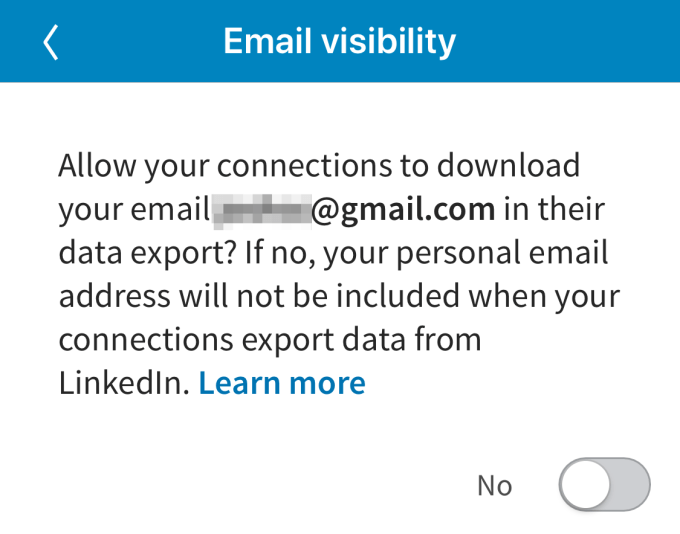
TechCrunch was tipped off by a reader that emails were no longer coming through as part of LinkedIn’s Archive tool for exporting your data. Now LinkedIn confirms to TechCrunch that “This is a new setting that gives our members even more control of their email address on LinkedIn. If you take a look at the setting titled ‘Who can download your email’, you’ll see we’ve added a more detailed setting that defaults to the strongest privacy option. Members can choose to change that setting based on their preference. This gives our members control over who can download their email address via a data export.”
That new option can be found under Settings & Privacy -> Privacy -> Who Can See My Email Address? This “Allow your connections to download your email [address of user] in their data export?” toggle defaults to “No.” Most users don’t know it exists because LinkedIn didn’t announce it; there’s merely been a folded up section added to the Help center on email visibility, and few might voluntarily change it to “Yes” as there’s no explanation of why you’d want to. That means nearly no one’s email addresses will appear in LinkedIn Archive exports any more. Your connections will still be able to see your email address if they navigate to your profile, but they can’t grab those from their whole graph.
Facebook came to the same conclusion about restricting email exports back when it was in a data portability fight with Google in 2010. Facebook had been encouraging users to import their Gmail contacts, but refused to let users export their Friends’ email addresses. It argued that users own their own email addresses, but not those of their Friends, so they couldn’t be downloaded — though that stance conveniently prevented any other app from bootstrapping a competing social graph by importing your Facebook friend list in any usable way. I’ve argued that Facebook needs to make friend lists interoperable to give users choice about what apps they use, both because it’s the right thing to do but also because it could deter regulation.
On a social network like Facebook, barring email exports makes more sense. But on LinkedIn’s professional network, where people are purposefully connecting with those they don’t know, and where exporting has always been allowed, making the change silently seems surreptitious. Perhaps LinkedIn didn’t want to bring attention to the fact it was allowing your email address to be slurped up by anyone you’re connected with, given the current media climate of intense scrutiny regarding privacy in social tech. But trying to hide a change that’s massively impactful to businesses that rely on LinkedIn could erode the trust of its core users.
Powered by WPeMatico
Apple probably didn’t intend to let competitors take advantage of Siri Shortcuts this way, but you can now launch Google Assistant on your iPhone by saying “Hey Siri, OK Google .”
But don’t expect a flawless experience — it takes multiple steps. After updating the Google Assistant app on iOS, you need to open the app to set up a new Siri Shortcut for Google Assistant.
As the name suggests, Siri Shortcuts lets you record custom phrases to launch specific apps or features. For instance, you can create Siri Shortcuts to play your favorite playlist, launch directions to a specific place, text someone and more. If you want to chain multiple actions together, you can even create complicated algorithms using Apple’s Shortcuts app.
By default, Google suggests the phrase “OK Google.” You can choose something shorter, or “Hey Google,” for instance. After setting that up, you can summon Siri and use this custom phrase to launch Google’s app.
You may need to unlock your iPhone or iPad to let iOS open the app. The Google Assistant app then automatically listens to your query. Again, you need to pause and wait for the app to appear before saying your query.
This is quite a cumbersome walk-around and I’m not sure many people are going to use it. But the fact that “Hey Siri, OK Google” exists is still very funny.
On another note, Google Assistant is still the worst when it comes to your privacy. The app pushes you to enable “web & app activity,” the infamous all-encompassing privacy destroyer. If you activate that setting, Google will collect your search history, your Chrome browsing history, your location, your credit card purchases and more.
It’s a great example of dark pattern design. If you haven’t enabled web & app activity, there’s a flashy blue banner at the bottom of the app that tells you that you can “unlock more Assistant features.”
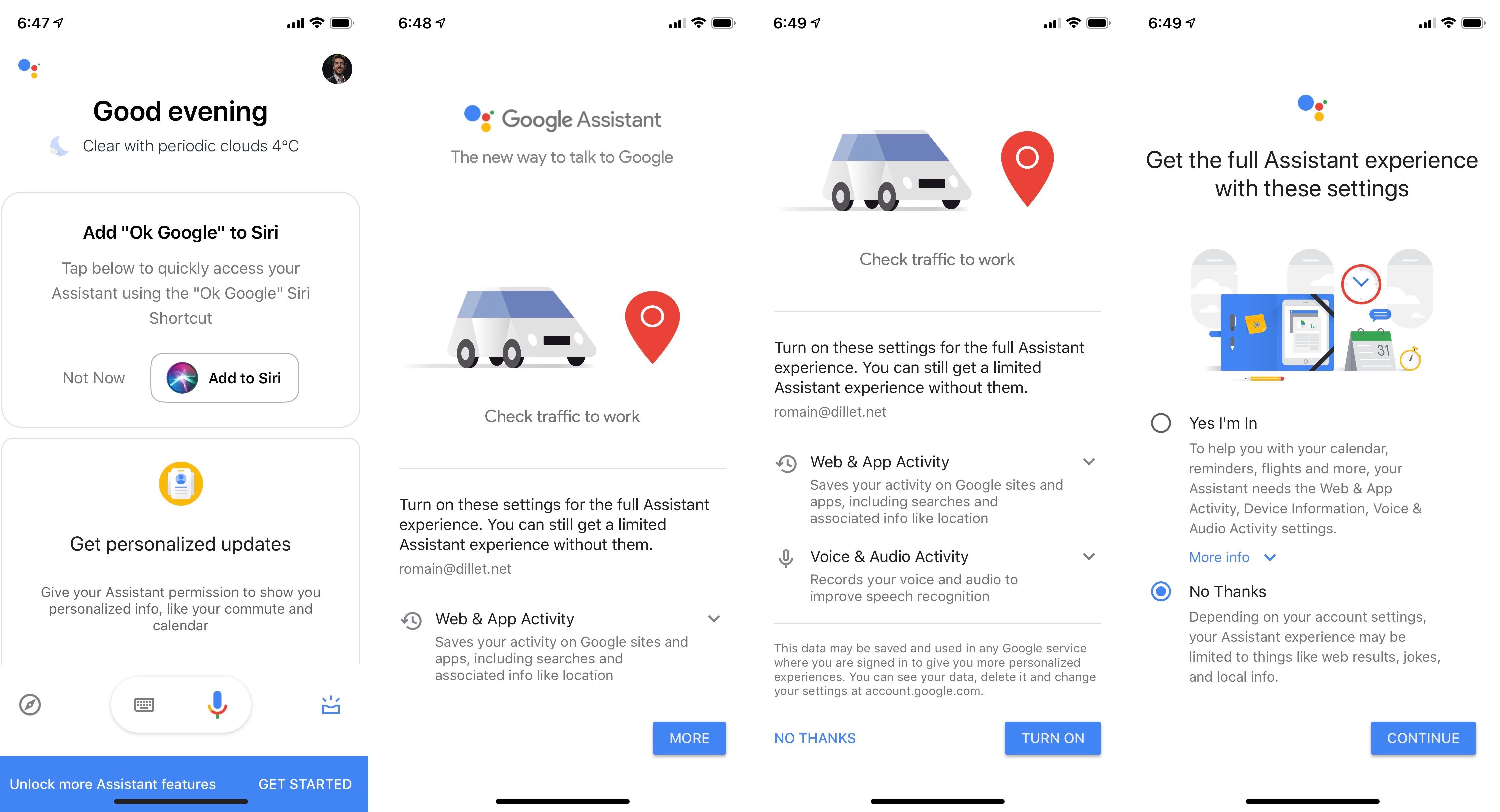
When you tap it, you get a cute little animated drawing to distract you from the text. There’s only one button, which says “More,” If you tap it, the “More” button becomes “Turn on” — many people are not even going to see “No thanks” on the bottom left.
It’s a classic persuasion method. If somebody asks you multiple questions and you say yes every time, you’ll tend to say yes to the last question even if you don’t agree with it. You tapped on “Get started” and “More” so you want to tap on the same button one more time. If you say no, Google asks you one more time if you’re 100 percent sure.
So make sure you read everything and you understand that you’re making a privacy trade-off by using Google Assistant.
Powered by WPeMatico
The social media singularity continues with the arrival of Snapchat Stories-style slideshows on LinkedIn as the app grasps for relevance with a younger audience. LinkedIn confirms to TechCrunch that it plans to build Stories for more sets of users, but first it’s launching “Student Voices” just for university students in the U.S. The feature appears atop the LinkedIn home screen and lets students post short videos to their Campus Playlist. The videos (no photos allowed) disappear from the playlist after a week while staying permanently visible on a user’s own profile in the Recent Activity section. Students can tap through their school’s own slideshow and watch the Campus Playlists of nearby universities.
LinkedIn now confirms the feature is in testing, with product manager Isha Patel telling TechCrunch “Campus playlists are a new video feature that we’re currently rolling out to college students in the US. As we know, students love to use video to capture moments so we’ve created this new product to help them connect with one another around shared experiences on campus to help create a sense of community.” Student Voices was first spotted by social consultant Carlos Gil, and tipped by Socially Contented’s Cathy Wassell to Matt Navarra.
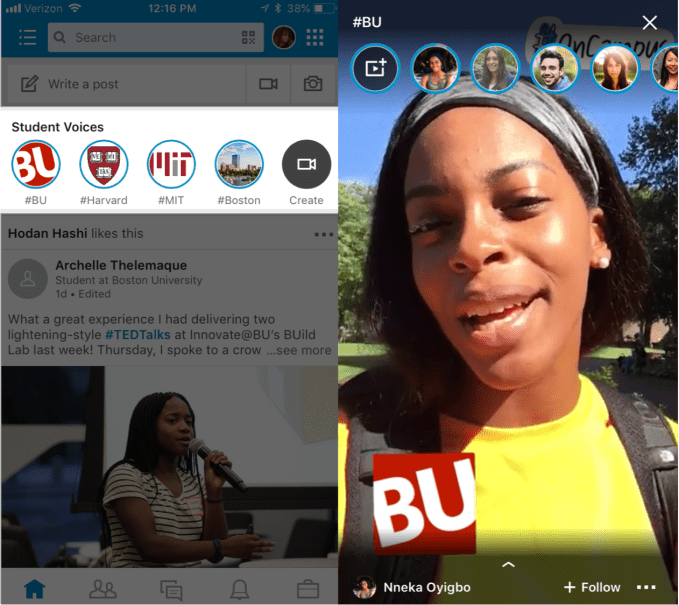
A LinkedIn spokesperson tells us the motive behind the feature is to get students sharing their academic experiences like internships, career fairs and class projects that they’d want to show off to recruiters as part of their personal brand. “It’s a great way for students to build out their profile and have this authentic content that shows who they are and what their academic and professional experiences have been. Having these videos live on their profile can help students grow their network, prepare for life after graduation, and help potential employers learn more about them,” Patel says.
But unfortunately that ignores the fact that Stories were originally invented for broadcasting off-the-cuff moments that disappear so you DON’T have to worry about their impact on your reputation. That dissonance might confuse users, discourage them from posting to Student Voices or lead them to assume their clips will disappear from their profile too — which could leave embarrassing content exposed to hirers. “Authenticity” might not necessarily paint users in the best light to recruiters, so it seems more likely that students would post polished clips promoting their achievements… if they use it at all.
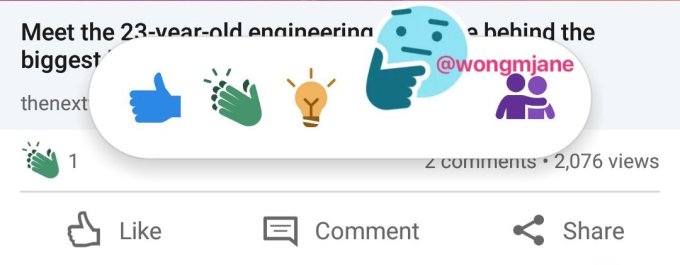
LinkedIn seems to be desperate to appeal to the next generation. Social app investigator and TechCrunch’s favorite tipster Jane Manchun Wong today spotted 10 minor new features LinkedIn is prototyping that include youth-centric options like GIF comments, location sharing in messages and Facebook Reactions-style buttons beyond “Like” such as “Clap,” “Insightful,” “Hmm,” and “Support.”
When users post to Student Stories, they’ll have their university’s logo overlaid as a sticker they can move around. LinkedIn will generate this plus a set of suggested hashtags like #OnCampus based on a user’s profile, including which school they say they attend, though users can also overlay their own text captions. Typically, users in the test phase were sharing videos of around 30 to 45 seconds. “Students are taking us to their school hackathons, showing us their group projects, sharing their student group activities and teaching us about causes they care about,” Patel explains. You can see an example video here, and watch a sizzle reel about the feature below.
For now, LinkedIn tells me it has no plans to insert ads between clips in Student Voices. But if the Stories content assists with discovering and vetting job candidates, it could make LinkedIn more unique and indispensable to recruiters who do pay for premium access. And if these Stories get a ton of views simply by being emblazoned atop the LinkedIn feed, users might return to the app more frequently to share them. As we’ve seen with the steady increase in popularity of Facebook Stories, if you give people a stage for narcissism, they will fill it.
LinkedIn’s start as a dry web tool for seeking jobs has made for a rocky transition as it tries to become a daily habit for users. Some tactical advice in its feed can be helpful, but much of LinkedIn’s content feels blatantly self-promotional, boring or transactional. Meanwhile, it’s encountering new competition as Facebook integrates career listings and job applications for blue-collar work into its social network that already sees over a billion people visit each day. It’s understandable why LinkedIn would try to latch on to the visual communication trend, as Facebook estimates Stories sharing will surpass feed sharing across all apps in 2019. But Student Voices nonetheless feels unabashedly “how do you do, fellow kids?”

Powered by WPeMatico
Fifteen weeks after Facebook announced its “Your Time on Facebook” tool that counts how many minutes you spend on the app, the feature is finally rolling out around the world. Designed to help you manage your social networking, the dashboard reveals how many minutes you’ve spent on Facebook’s app on that device each day for the past week and on average.
 You can set a daily limit and receive a reminder to stop after that many minutes each day, plus access shortcuts to notification, News Feed and Friend Request settings. Those last two shortcuts are new, but otherwise the feature works the same as when it was previewed. You can access it by going to Facebook’s More tab -> Settings & Privacy -> Your Time on Facebook.
You can set a daily limit and receive a reminder to stop after that many minutes each day, plus access shortcuts to notification, News Feed and Friend Request settings. Those last two shortcuts are new, but otherwise the feature works the same as when it was previewed. You can access it by going to Facebook’s More tab -> Settings & Privacy -> Your Time on Facebook.
TechCrunch first broke the news that Facebook was working on the feature in June. Facebook gave some explanation for the delayed access to the feature, with spokespeople telling me “We typically roll out features slowly so we can catch bugs early and resolve them quickly. We slowed the rollout of the tools after launch so our teams could fix a few bugs before we expanded globally,” and that “the tools will continue rolling out over the next few weeks.” Social consultant Matt Navarra had spotted the tool reaching more users today.
With the launches of similar tools as part of the latest versions of iOS and Android, plus the roll out of the similar Your Activity tab on Instagram last week, digital well-being features are becoming available to a wide swath of smartphone users. The question is whether simply burying these features in the Settings menus is enough to actually get people to shift toward healthier behavior.
Facebook and Instagram’s versions are particularly toothless. There are no options to force you to ease off your usage, just a quick daily limit notification to dismiss. iOS 12’s Screen Time at least delivers a weekly usage report by default so the feature finds you even if you don’t go looking for it. And Android’s new Digital Wellbeing dashboard is by far the most powerful, graying out app icons and requiring you to dig into your settings to unlock apps once you hit your daily limit. Facebook doesn’t necessarily need to force heavier restrictions on us, but it should at least provide more compelling optional tools to actually make us put our phones down and look up at the real world.
Facebook’s dashboard doesn’t integrate with Instagram’s, which would give people a more holistic sense of their activity on the social networks. You also won’t have your desktop Facebooking or time on secondary mobile devices like tablets tabulated here either.
But the biggest flaw remains that Your Time on Facebook treats all time the same. That seems to ignore the research Facebook itself has presented about digital well-being on social networks, as well as CEO Mark Zuckerberg’s comments on what constitutes healthy and unhealthy behavior. Zuckerberg said on the Q1 2018 earnings call “the well-being research that we’ve done . . . suggests that when people use the internet for interacting with people and building relationships, that is correlated with all the positive measures of well-being that you’d expect — like longer term health and happiness, feeling more connected and less lonely – whereas just passively consuming content is not necessarily positive on those dimensions.”
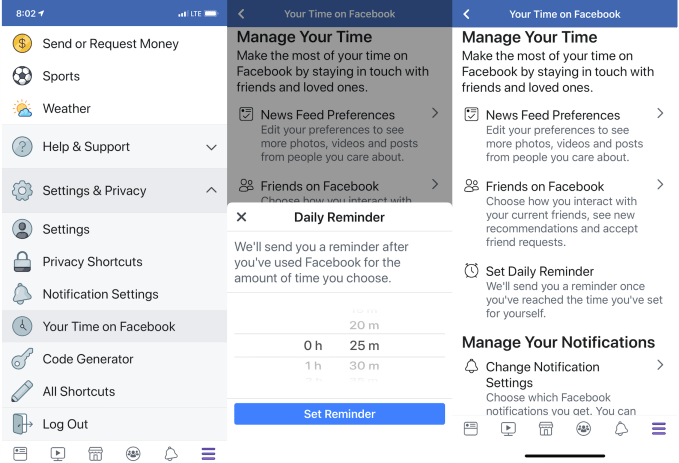
Yet you can’t tell active and passive Facebooking apart from the dashboard. There’s no way to see a breakdown of how long you spend browsing the News Feed, watching Stories or exploring photos on profiles versus creating posts or comments, messaging or interacting in Groups. That segmentation would give users a much clearer view of where they’re spending or wasting hours, and what they could do to make their usage healthier. Hopefully with time, Facebook gives the dashboard more nuance so we can track not just time, but time well spent.
Powered by WPeMatico
Instagram is fighting back against automated apps people use to leave spammy comments or follow then unfollow others in hopes of growing their audience. Today Instagram is removing from people’s accounts who use these apps inauthentic follows, Likes and comments that violate its policies; sending them a warning to change their password to cut ties with these apps, and saying people who continue using these apps “may see their Instagram experience impacted.” Instagram tells me it “may limit access to certain features, for example” for those users.
Instagram is also hoping to discourage users from ever giving another company the login details to their accounts as this can lead to them being hacked or having their account used to send spam. So if you see Instagram follower accounts drop, it’s not because that profile offended people, but because the followers were fake.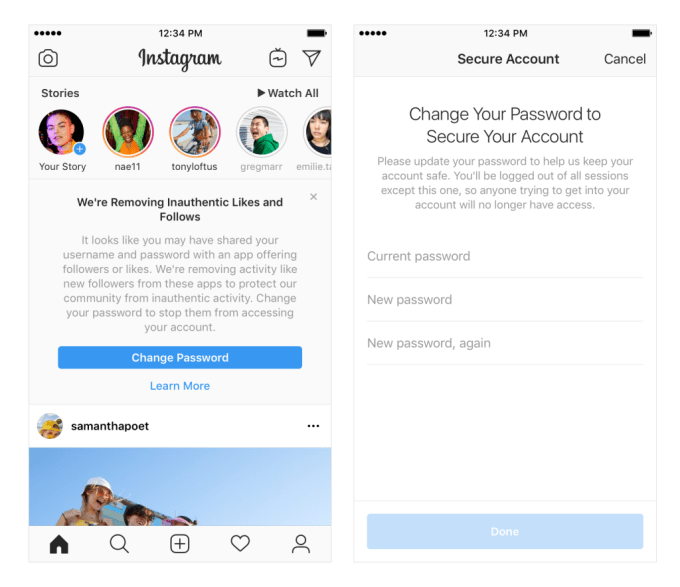 The renewed vigor for policy enforcement comes amidst the continuing threat of foreign misinformation campaigns on Facebook and Instagram designed to polarize communities and influence elections in the U.S. and abroad. Facebook has said that inauthentic accounts are often the root of these campaigns, and it has removed 754 million fake accounts in the past quarter alone, and stopping these spam apps could prevent them from misusing clients’ accounts. Instagram has been taking down fake accounts since at least 2014, but this is the first time it’s publicly discussed removing fake likes from posts. It now says “We’ve built machine learning tools to help identify accounts that use [third-party apps for boosting followers] and remove the inauthentic activity.”
The renewed vigor for policy enforcement comes amidst the continuing threat of foreign misinformation campaigns on Facebook and Instagram designed to polarize communities and influence elections in the U.S. and abroad. Facebook has said that inauthentic accounts are often the root of these campaigns, and it has removed 754 million fake accounts in the past quarter alone, and stopping these spam apps could prevent them from misusing clients’ accounts. Instagram has been taking down fake accounts since at least 2014, but this is the first time it’s publicly discussed removing fake likes from posts. It now says “We’ve built machine learning tools to help identify accounts that use [third-party apps for boosting followers] and remove the inauthentic activity.”
Some of the most popular bot apps for growing followers like Instagress and Social Growth have been shut down, but others like Archie, InstarocketProX and Boostio charge $10 to $45 per month. They often claim not to violate Instagram’s policies, though they do. The New York Times this year found many well-known celebrities had stooped to buying fake Twitter followers from a company called Devumi.
Users typically have to provide their username and password to these services, which then take control of their accounts and automatically Like, comment on and follow accounts associated with desired hashtags to dupe them into following the unscrupulous user back. The spam app users will now get scolded by Instagram, which will send “an in-app message alerting them that we have removed the inauthentic likes, follows and comments given by their account to others” and be told to change their passwords.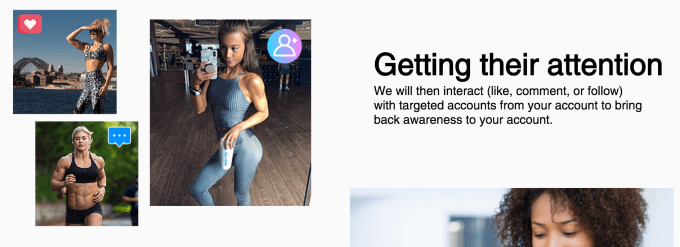
InstarocketProX advertises how it sends fake likes and follows from your account to get you followersOne big question, though, is whether Instagram will crack down harder on ads for services that sell fake followers that appear on its app. I’ve spotted these in the past, and they sometimes masquerade as analytics apps for assisting influencers with tracking the size of their audience. We asked Instagram and a spokesperson told us “Ads are also subject to our Community Standards, which prohibit spammy activity like collecting likes, followers, etc. — so you are correct that ads promoting these services violate our policies. Please feel free to report them if you see them.”
Follower accounts on apps like Instagram have become measures of people’s influence, credibility and earning potential. This is becoming especially true for social media stars who are paid for brand sponsorships in part based on their audience size. Now that brands are even paying “nanoinfluencers” with as few as one thousand followers to post sponsored content, the allure to use these services can be high and lead to an immediate return on illicit investment.
If no one can believe those counts are accurate, it throws Instagram’s legitimacy into question. And every time you get a notification about a fake follow or Like, it distracts you from real life, dilutes the quality of conversation on Instagram and makes people less likely to stick with the app. Anyone willing to pay for fake followers doesn’t deserve your attention, and Instagram should not hold back from terminating their accounts if they don’t stop.
Powered by WPeMatico
Genies is emerging as the top competitor to Snapchat’s wildly popular Bitmoji as Facebook, Apple and Google have been slow to get serious about personalized avatars. More than one million people have customized dozens of traits to build a realistic digital lookalike of themselves from over a million possible permutations.
When Genies launched a year ago after raising $15 million in stealth, it misstepped by trying to show people’s Genies interpreting a few weekly news stories and seasonal moments. Now the startup has figured out users want more control, so it’s shifting its iOS and Android apps to let you chat through your avatar, which acts out keywords and sentiments in reaction to what you type, which you can then share elsewhere. And Genies is launching a software developer kit that charges other apps to let you create avatars and use them for chat, stickers, games, animations and augmented reality.

Genies’ SDK puts its avatars in other apps
To power these new strategies and usher in what CEO Akash Nigam calls “the next wave of communication through avatars where people feel comfortable expressing themselves,” Genies has raised $10 million more. The party round comes from a wide range of investors, from institutional firms like NEA and Tull Co. to angels like Tinder’s Sean Rad, Raya’s Jared Morgenstern and speaker Tony Robbins; athletes like Carmelo Anthony, Kyrie Irving and Richard Sherman; and musicians, including A$AP Rocky, Offset from Migos, The Chainsmokers and 50 Cent. Some like Offset have even used their Genie to stand in for them for brand sponsorships, so their avatar poses for photos instead of them.
“We’ve transitioned from being an app to an avatar services company,” Nigam tells me. The son of WebMD’s co-founder, Nigam build a string of failed apps while at University of Michigan and worked with Genies co-founders Evan Rosenbaum and Matt Geiger on a startup called Blend that raised some money. Watching Snapchat-owned Bitmoji stay glued atop the app download charts inspired them to see more opportunity in the avatar space. Genies has had some talent issues, though. Nigam says it fired co-founder and president Matt Geiger, and a source tells me there were company culture issues that led to issues with the content writers it hired to create scenes for Genies to act out. Now it’s getting out of that scripted content creation business to focus on algorithmic suggestions of animations.

Genies in-app chat
The revamped Genies app lets you chat with up to six friends through your avatar. As you type, Genies detects actions, places, things and emotions, and offers you corresponding animations your avatar acts out with a tap. Given people already have plenty of place to chat, it might be tough to get people to move real conversations inside Genies for more than a quick hit of novelty. But that functionality is also coming to Facebook Messenger, WhatsApp and iMessage’s keyboards, where the expressive animations could naturally augment your threads.

Gucci paid to let Genies users add its luxury clothes to their avatars
With the Genies SDK, the startup is ready to challenge Snapchat’s new Snap Kit that lets apps build Bitmoji into their keyboards. But for $100,000 to $1 million in licensing fees, Genies allows apps to develop much deeper avatar features. Beyond creating keyboard stickers, games can plaster your Genies’ face over your character’s head, and utilities apps can have your Genie act out the weather or celebrate transactions. And since Genies is still taking off, partners can create experiences that feel fresh rather than just a repurposing of Bitmoji’s already-established cartoony avatars. Users spent an average of 19 minutes creating their Genie, so the SDK could add significant engagement to these apps. Genies has also launched its first official brand deal, where Gucci has created a wheel in the Genies creator so you can deck out your mini-you with luxury clothing.
The Avatar Wars (from left): Facebook Avatars, Google Gboard Mini Stickers, Apple Memoji
Despite Bitmoji’s years of success, it’s yet to have a scaled competitor. TechCrunch broke the news that Facebook is working on a “Facebook Avatars” feature, but seven months later it’s still not publicly testing and the prototype looks childish. Google’s Gboard just added the ability to create avatars based on a selfie, but they’re bland, low on detail and far from fun looking. And Apple’s latest mobile operating system lets you create a Memoji, though they too look generic like actual emoji rather than something instantly identifiable as you. By designing avatars that not only look like you but like a cooler version of you, Genies could capture the hearts and faces of millions of teens and the influencers they follow.
Powered by WPeMatico
“I wasn’t asking to pay in Bitcoin!” Plastiq CEO and co-founder Eliot Buchanan recalls with a laugh. “I went to pay part of my tuition at Harvard and I was told that they didn’t (and never would) accept credit cards. It was inconvenient and seemed odd. Credit cards had been around for 50 years.” That set off the a light bulb in his head. “Why couldn’t I use a credit card to pay for this important bill? So, I set out to solve my own problem.”
Whether you’re trying to pay your rent or tuition on credit, or you have a business and want to invest in a new opportunity or get a better rate by paying vendors up front, Plastiq can help. For a flat 2.5 percent fee, you pay Plastiq through your credit card, and it issues the proper wire transfer, check or deposit for up to $500,000, or even more, on your behalf to whomever you owe.
Now with more than 1 million clients, growth-stage VCs are taking notice. Kleiner Perkins has just led a $27 million Series C for Plastiq with partner Ilya Fushman joining the board. A source says the raise that also comes from DST Global between doubles and triples Plastiq’s valuation over its 2017 Series B-1 rounds of $11 million and $16 million. Now with $73 million in total funding, it plans to add 100 people to its current team of 60, while building out its small business product and bank partnerships.
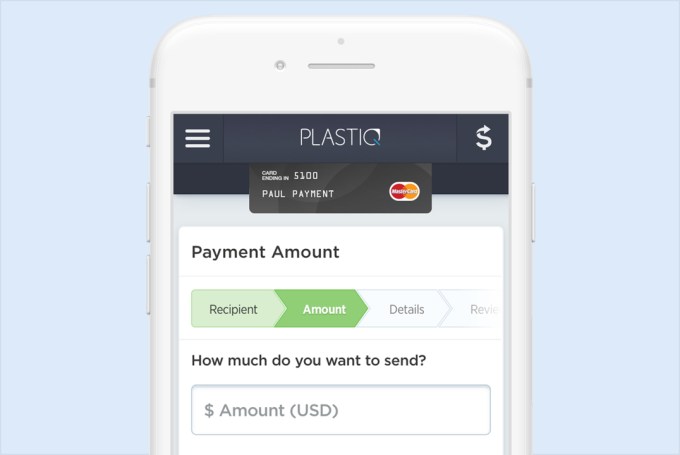
“As tens of thousands of business owners started using Plastiq actively for billions of dollars in payments, we realized we had this incredible opportunity to serve as the hub/platform on which they (SMBs) could run all their payments. The very fabric of America’s economy — and certainly much of the world — is run by rising or aspiring small business owners,” Buchanan tells me. He says that’s “the main reason that seeded this Kleiner financing and our renewed vision to ‘accelerate how small businesses grow.’ [Helping people pay with credit cards] is merely the entry point to a much broader play where we are central to how a small business runs.”
For example, if a small business wants to ramp up production of something it’s selling, it’d typically have to pay up front for manufacturing, but wait months until the stuff is shipped and sold to recoup its investment. That can put a major squeeze on the company’s operating capital. With Plastiq, the business can pay with credit up front so they don’t have to worry about being in danger of running out of money in the meantime. Plastiq also lets businesses accept credit card payments, which can win them favor with partners.

Plastiq co-founders (from left): Eliot Buchanan and Dan Choi
Specialty medical clinic chain Metro Vein pays vendors who don’t take credit with Plastiq instead. “I was able to invest in a new line of business that has enabled me to more than double our revenues in the last 10 months,” said CEO Dmitri Ivanov. And thanks to tax write-offs, business users of Plastiq can push its realized fee down to 2 percent.
Buchanan claims Plastiq doesn’t have any direct competitors that allow SMBs to pay for all their bills via credit. It does carry platform risk, though. “Like any payments business, we rely heavily on Visa, MasterCard and American Express. A challenge or risk factor is that you’re relying on very large companies that are very successful. You have to learn to work hand in hand with those partners instead of ‘disrupt them.’” He says Plastiq’s relationships with them are positive right now since it’s driving new revenue for them and helping their customers spend in new areas.
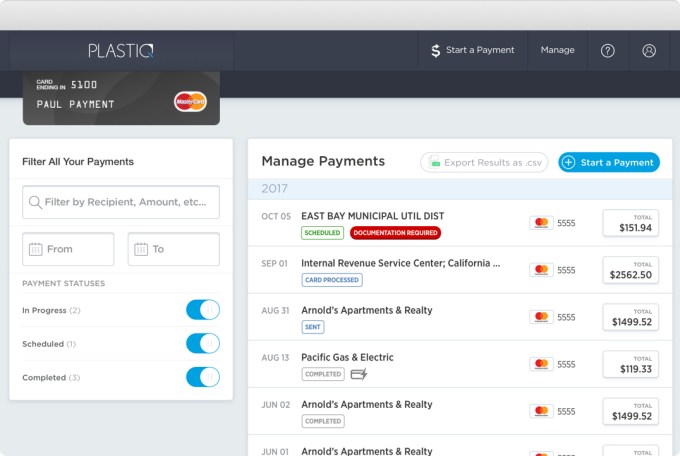
There’s also the risk that people misuse Plastiq to procrastinate on actually paying their personal bills or get in over their head investing in their business. But Plastiq’s new board member Fushman calls the service “this elegant way for businesses to tap into credit they’ve been issued but they haven’t been able to utilize before.” For many who are happy to pay though just need some time and flexibility, Plastiq can pitch in.
Powered by WPeMatico